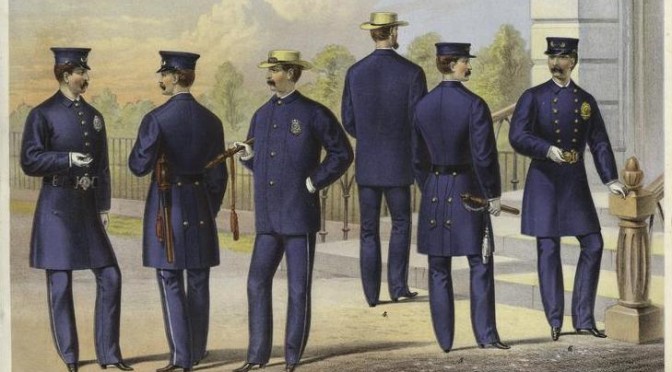ACAB: The Antebellum Years

The police have basically always existed as a racist institution. And here’s an example of this from mid-19th century New York City.
No one individual embodied the brawling roughness of New York policing like Captain Isiah Rynders of the U.S. Marshals. Born in 1804 in the Hudson River town of Waterford, New York, Rynders was a gambler on Mississippi River steamboats. He reportedly killed a man after a card game and fled to his home state around 1837. Known for his thunderous voice, a powerful memory, and a penchant for histrionics, Rynders made an immediate impact on New York City. Black New Yorkers became his main target, and for decades, he patrolled the streets looking for runaways who had escaped enslavement in the South and who, against tremendous odds, had found freedom in Manhattan.
The Constitution’s Fugitive Slave Clause required northern free cities like New York to return the self-emancipated to their southern enslavers, and the NYPD and officers like Rynders were only too willing to comply, conveniently folding their hatred of black people into their reverence for the nation’s founding document. Armed with the founders’ compromise over slavery, Rynders and his fellow officers, men like Tobias Boudinot and Daniel D. Nash, terrorized New York’s black community from the 1830s up through the Civil War.
And, even worse, it often mattered little whether a black person was born free in New York or had in fact escaped bondage; the police, reinforced by judges like the notorious city recorder Richard Riker, sent the accused to southern plantations with little concern and often even less evidence.
Thanks to Rynders, Boudinot, and Nash, the New York police department had become an extension of the powerful reach of southern slavery, and each month—and often each week in the summer months—brought news of another kidnapping or capture of a supposed runaway. Black New Yorker John Thomas, for example, was claimed by an enslaver from Louisville, Kentucky. Thomas purportedly fled slavery along the Ohio River, then travelled through Canada, and ultimately found a job as a porter in a Manhattan hotel. In late 1860, Thomas was arrested as a fugitive by the Manhattan police. While in prison, Thomas hastily drafted a note, dropped it out his cell window, and asked a passing boy to give the note to his employer, who submitted a writ of habeas corpus.
Unfortunately, the marshal on duty was none other than Rynders, who produced a different black man in response to the writ, and the judge declared the writ satisfied. In the meantime, Thomas’ employer and friends learned, too late, that one of Rynders’ deputies had taken the real John Thomas to Richmond, where he would be transported to Kentucky, lost in the darkness of American slavery, like untold numbers of other kidnapping victims.
The idea that slavery was a uniquely southern problem in 1860 is as wrong as the idea that the problem of racism is a uniquely or even especially southern problem today.
